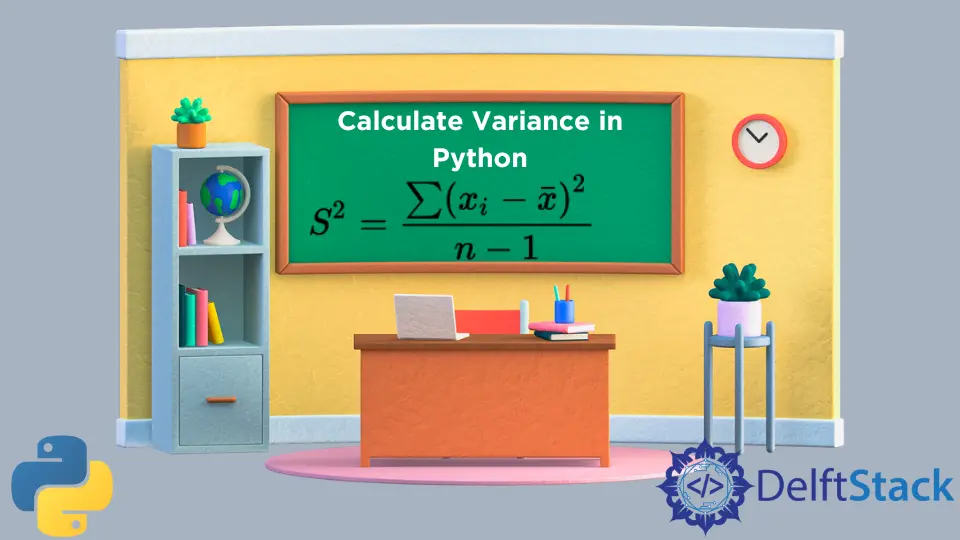在 Python 中計算方差
-
在 Python 中使用統計模組的
variance()函式計算方差 -
在 Python 中使用 NumPy 庫的
var()函式計算方差 -
在 Python 中使用
sum()函式和列表推導計算方差

方差是考慮分佈在資料集中的所有資料點的離散度度量。有兩種離散度度量,方差和標準差(方差的平方根)。
在 Python 中,有幾個模組和庫可以幫助計算資料集或資料點的方差。本教程將通過提供的示例討論如何在 Python 中找到差異,以更好地理解這些方法。
在 Python 中使用統計模組的 variance() 函式計算方差
variance() 函式是 Python 統計模組的函式之一。該模組用於提供對數值資料執行統計操作(如均值、中位數、標準差等)的函式。
統計模組的 variance() 函式可幫助使用者計算資料集或給定資料點的方差。
import statistics
list = [12, 14, 10, 6, 23, 31]
print("List : " + str(list))
var = statistics.variance(list)
print("Variance of the given list: " + str(var))
輸出:
List : [12, 14, 10, 6, 23, 31]
Variance of the given list: 86
在上面的示例中,str() 函式將整個列表及其標準差轉換為字串,因為它只能與字串連線。
在 Python 中使用 NumPy 庫的 var() 函式計算方差
NumPy 庫的 var() 函式還可以計算給定陣列列表中元素的方差。
import numpy as np
arr = [12, 43, 24, 17, 32]
print("Array : ", arr)
print("Variance of array : ", np.var(arr))
輸出:
Array : [12, 43, 24, 17, 32]
Variance of array : 121.04
在 Python 中使用 sum() 函式和列表推導計算方差
sum() 函式總結了一個可迭代物件的所有元素,如列表、元組等。
另一方面,列表推導是一種從現有列表中存在的元素建立列表的方法。
sum() 函式和列表推導可以幫助計算列表的方差。
list = [12, 43, 24, 17, 32]
average = sum(list) / len(list)
var = sum((x - average) ** 2 for x in list) / len(list)
print(var)
輸出:
121.04
在上面的示例中,匯入了 Math 模組,因為它提供了用於計算給定值的平方根的 sqrt() 函式。
另外,請注意使用了函式 len()。此函式有助於提供給定列表的長度或列表中的元素數。
上面的程式是基於方差的數學公式。
Lakshay Kapoor is a final year B.Tech Computer Science student at Amity University Noida. He is familiar with programming languages and their real-world applications (Python/R/C++). Deeply interested in the area of Data Sciences and Machine Learning.
LinkedIn